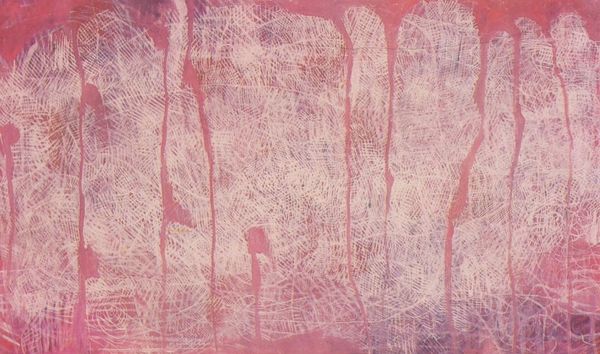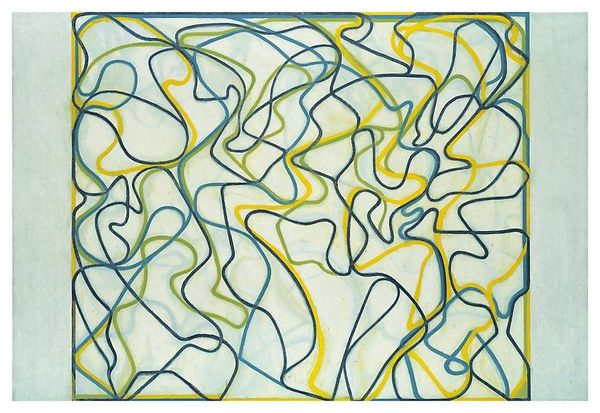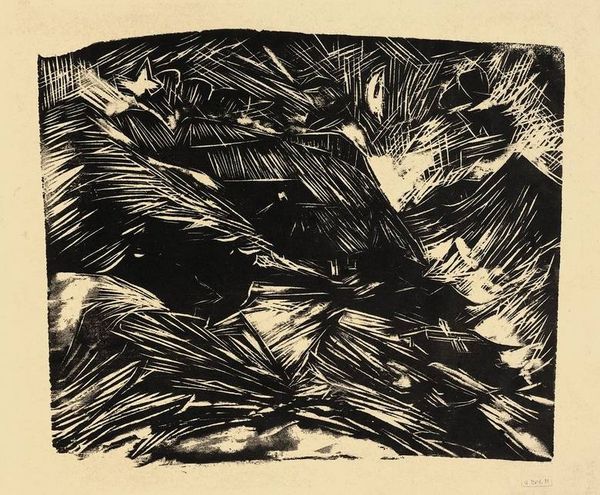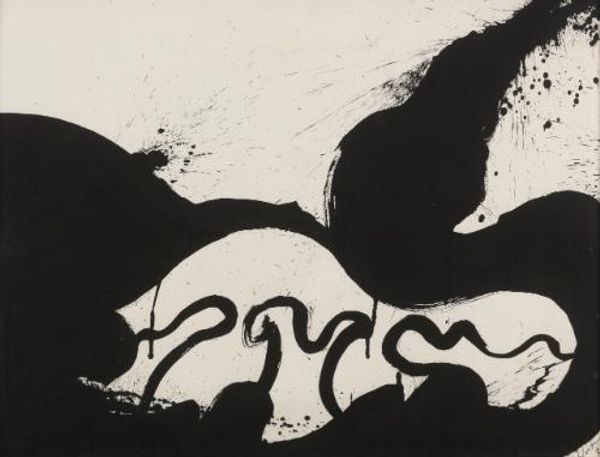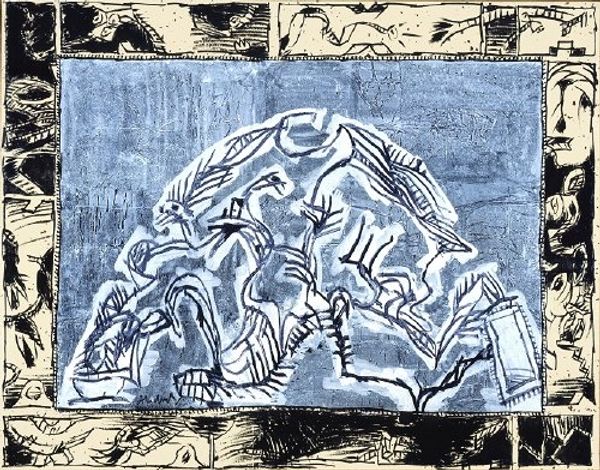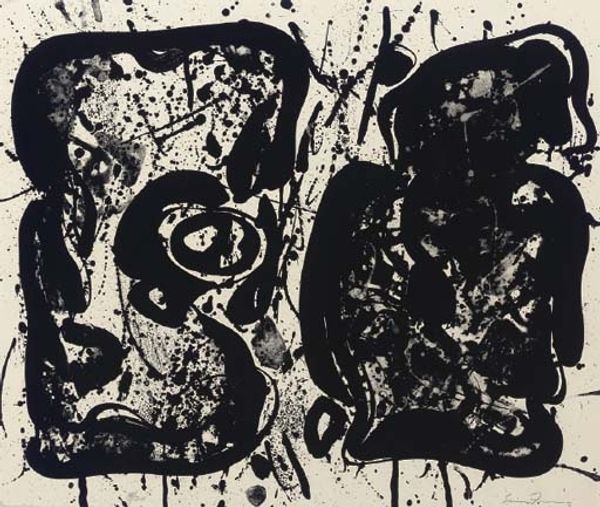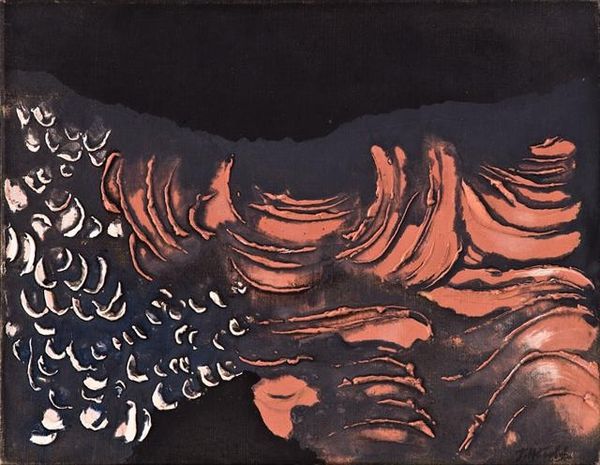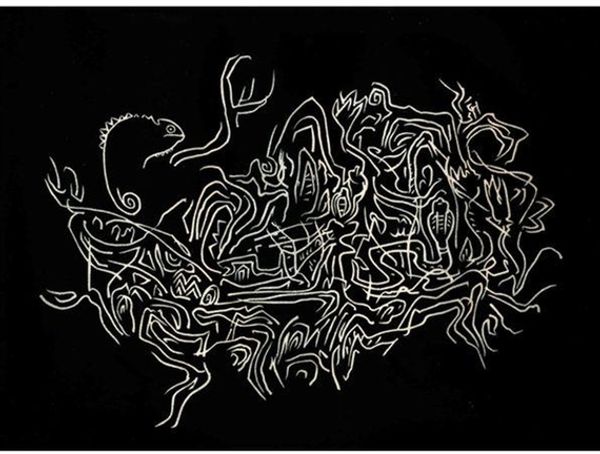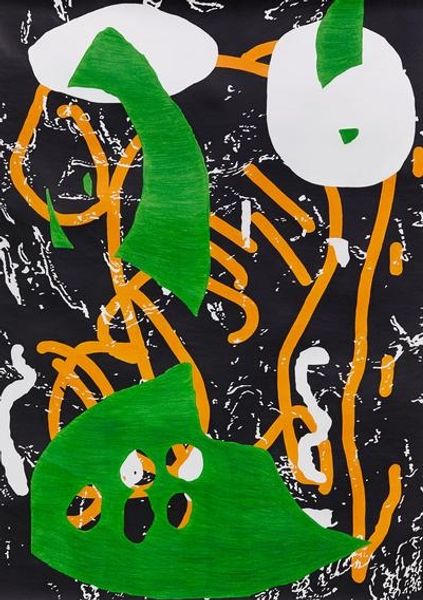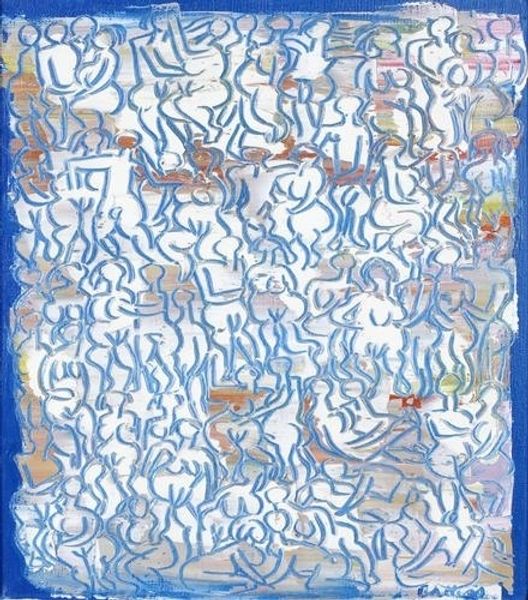
painting, oil-paint, impasto
#
painting
#
oil-paint
#
landscape
#
figuration
#
form
#
impasto
#
line
#
nude
Copyright: Walter Battiss,Fair Use
Curator: Well, hello. Let's discuss "Three Female Nudes." We don't have a specific creation date for this one, but the artist is Walter Battiss. Editor: My first impression? It feels dense. The figures are almost swallowed by the abstract reeds around them. It's striking how Battiss uses simple lines and dark blocks of color to create this tension between the bodies and the landscape. Curator: It certainly speaks to Battiss’s interest in the body and its relation to space, especially within the context of postcolonial African art. I find it pertinent that the female nude is set against, or almost camouflaged within, what appears to be African flora. What does it say about the intersectionality of bodies and landscape? Are these figures dominant or dominated? How is Battiss commenting on power and representation here? Editor: I’m less concerned with dominance and more curious about his process. Looking closer, the impasto technique is quite evident; you can almost feel the texture. The thickness of the oil-paint makes me think about labor: the labor of the artist, of course, but also the implied labor of those whose land and resources might be symbolized by the reeds in the painting. Curator: That's a fascinating reading! Connecting the materiality of the painting with a broader narrative of labour, I am provoked to interrogate the role of the female nude within such contexts, whether within this piece or other cultural expressions, because women are so often doubly burdened by social expectations *and* their role in material production. Editor: I'm interested, too, in how he challenges traditional distinctions between ‘high art’ – the nudes, classically depicted – and something like ‘craft’, given his apparent gestural engagement with his materials in portraying the ground. The work invites us to interrogate such divisions themselves. Curator: A fruitful discussion! Walter Battiss certainly leaves us plenty to ponder, not just aesthetically, but within deeper, challenging intersections of identity and society. Editor: Indeed. A potent example of how form and technique contribute meaningfully to social and cultural commentary.
Comments
No comments
Be the first to comment and join the conversation on the ultimate creative platform.
